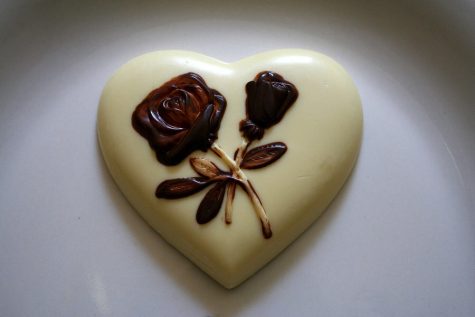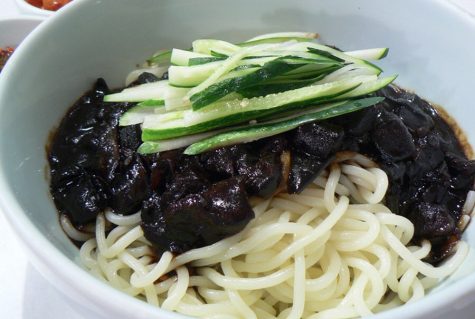Valentine’s Day Around the World: It’s Spoon-Carving Time
An assortment of traditional American Valentine’s Day goodies.
February 21, 2017
Valentine’s Day, originally an ancient Roman holiday dedicated to celebrating fertility, is now commonly celebrated with chocolates, flowers, and romantic dates. For some Americans, this day of cliche marketing schemes may be commemorated with a single spoon and a gallon-size tub of ice cream in front of the television. Whether a day of love — or hate — the rest of the world has caught on to these Western traditions, with each country adding their own twist.

An example of Japanese chocolate for White Day.
In the case of many Western cultures, Valentine’s Day is a very female-centric holiday. In Japan, however, typical gender roles are switched on Feb. 14 and women give homemade or store-bought chocolates to all the men in their life: a boyfriend or husband, an acquaintance, or a male superior or friend. These gifts are referred to as “honmei-choko,” “cho-giri choko,” and “giri-choko,” respectively. “Tomo-choko,” chocolate for female friends, has also become quite popular. Another similar holiday is White Day, on March 14, a day when men reciprocate with appropriately colored gifts such as white chocolate. This movement arose in the 1980’s as a profitable marketing scheme for Japanese chocolatiers.

Jajangmyeon from South Korea
Similar to Japan, South Korea celebrates White Day onFeb. 14. However, the romance doesn’t stop there. Each month has a specific theme on the fourteenth, ranging anywhere from Rose Day in May to Hug Day in December. April 14, Black Day, is of particular interest. Singles who haven’t received gifts in past months meet together to eat jajangmyeon, a noodle dish with black sauce. Many see it as a celebration of the freedom of single life, while others see it as a day of single sorrow.
Wales, unlike South Korea, has Valentine’s traditions driven by ancient custom rather than the current market. It is said that love spoons, made from either wood or whalebone, were originally hand-carved by

A traditional love spoon from Wales.
sailors out at sea, waiting to return home. These pieces of art are intricately designed and can be decorated with keys, wheels, and beads. This tradition may have become obscure as paper hearts and roses continue to take over, but this was once a popular custom.
Over in the Philippines, a growing trend is mass marriage. On Feb. 14, 2013, over 4000 couples were wed in the Philippines. In 2004, a world record was broken when 5,122 couples kissed, overtaking the previous Chilean record of 4,445. “It’s a good feeling that we’re part of something this big for the Philippines,” said Menchu Cuento in response to BBC News.

In the Philippines, mass weddings are the new trend.
For many people, whether from the United States or otherwise, Valentine’s Day really isn’t a point of interest. “My parents were never too big on Valentine’s Day,” said Juliya Hsiang ‘17, a student from Ohio whose parents are from Taiwan. “They make an extra effort to serve each other, but they’ve never really done any[thing] extravagant.” And really, what more is there to ask?
Valentine’s Day is a day of commemoration for those special people, whether a partner or a family member or a friend, who turn the everyday into the extraordinary.














